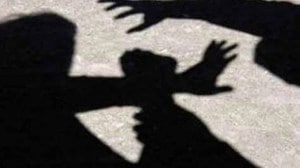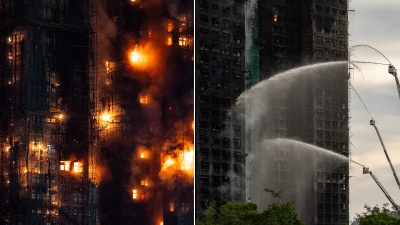As the sun slowly dips below the horizon, dotted by small houses, trees and the Ayodhya Hills, 55-year-old Amulya Ratan Mahato adjusts his torch while chatting with friend Sripati Mahato, 80. The two are sitting on the stairs of the ticket counter at the Begunkodar railway station in Purulia. Soon, it will be pitch dark, and his old shawl, monkey cap, and ‘Made in China’ torch would be Amulya Mahato’s only defence at this cold, power-less, and, as some claim, sole ‘haunted railway station’ in West Bengal.
Set up in 1960, the railway station shut down seven years later due to “ghost stories”. It could start re-functioning only in 2007, after local villagers wrote to then railway minister Mamata Banerjee and CPM leader Basudeb Acharya, who belongs to Purulia and who as MP headed the parliamentary standing committee on Railways at the time. But the haunted tag remains.

 This counter, next to which Amulya sits, is already shut for the day. It opens at 4.30 am, and closes at sundown, around 5.30 pm. (Source: Express Photo)
This counter, next to which Amulya sits, is already shut for the day. It opens at 4.30 am, and closes at sundown, around 5.30 pm. (Source: Express Photo)
Located in the midst of a desolate patch of land, with deserted buildings around — unlike the busy NH 60A nearby — the station has no platform and is bare but for a single tubewell, a few signboards, and the 12 ft-by-10 ft ticket counter in a corner.
 175-200 tickets are sold in a day. (Express Photo/Subham Dutta)
175-200 tickets are sold in a day. (Express Photo/Subham Dutta)
This counter, next to which Amulya sits, is already shut for the day. It opens at 4.30 am, and closes at sundown, around 5.30 pm. At 9 pm, the counter opens again for a few minutes, for the last train of the day, though there are never any ticket buyers. The 10-12 passengers who arrive are mostly daily wagers returning home. Only about half a dozen other local trains halt at the station, though it is located on the main line between West Bengal and Jharkhand, most of them before sunset, and it doesn’t figure on the computerised ticketing system of South Eastern Railways.
 Amulya and his brother make Rs 1.25 per ticket sold, with 175-200 tickets sold in a day. (Source: Express Photo)
Amulya and his brother make Rs 1.25 per ticket sold, with 175-200 tickets sold in a day. (Source: Express Photo)
The station doesn’t have any station master since it reopened. Amulya’s brother Dolu Mahato is the registered private booking agent for tickets since eight years, and the two — belonging to adjacent Nolkupi village — alternatively man the ticket counter. Sanjay Ghosh, Chief PRO, South Eastern Railways, says, “Halt stations where no mail or express trains stop are off the computerised system. At some halt stations where there are very few passengers, such as Begunkodar, we don’t have any railway employees either; only such ticket booking agents.”
Amulya and his brother make Rs 1.25 per ticket sold, with 175-200 tickets sold in a day. This may go up to over 700 tickets during tribal festivals such as Tushu. The tribals flock to the Ayodhya Hills, which take their name from a myth associated with the Ramayana, for hunting on Tushu.
 Recently, members of a prominent rationalist group, the West Bengal Vigyan Manch, spent a night at the station to counter the ghost theories. (Source: Express Photo)
Recently, members of a prominent rationalist group, the West Bengal Vigyan Manch, spent a night at the station to counter the ghost theories. (Source: Express Photo)
Still giving company to Amulya, Sripati, who, back in the ’70s, was the first teacher at the Government Primary School in nearby Bamnia, says he comes to the station every day. “There are so many stories surrounding it, but I have never seen anything even remotely like a ghost,” the 80-year-old says, breaking into a toothless grin.
Story continues below this ad
Recounting how the stories originated, Sripati adds, “At first, this was a proper station, with quarters for people. The station master was a musician and very friendly. But then, some goons misbehaved with his daughter. He left, telling the Railways the station was haunted. In 1967, it shut down.”
 Amulya runs the ticket counter with his brother. (Express Photo/Subham Dutta)
Amulya runs the ticket counter with his brother. (Express Photo/Subham Dutta)
Another story, says Sripati, talks of “a woman who walks on the rail tracks at night”. “Stories of women who committed suicide years ago roaming around in white after dark, of strange noises being heard, including cries of women, are quite popular.” Pointing to the desolation around, the 80-year-old adds, “The empty fields, the tall trees, all add to the atmosphere. Even if a snake moves or an insect makes a noise, it instills fear. Not all people are educated here.”
In August 2016, two solar-powered lights were put up at the station, but they were vandalised the same night, leaving it again without any light. Around the same time, the Begunkodar ghost stories started doing the rounds on social media, bringing in paranormal researchers, college students and people interested in ghost tourism.
 Located in the midst of a desolate patch of land, the station has no platform and is bare but for a single tubewell, a few signboards, and the 12 ft-by-10 ft ticket counter in a corner. (Source: Express Photo)
Located in the midst of a desolate patch of land, the station has no platform and is bare but for a single tubewell, a few signboards, and the 12 ft-by-10 ft ticket counter in a corner. (Source: Express Photo)
By 8 pm, the stars in the clear night sky and the headlights of our car are the only illumination. Sripati and Amulya have left for home, and the hushed chatter between some people who have come to receive passengers arriving on the 9 pm train, all carrying torches, and the rustle of leaves in the cold wind are the only sounds around. At intervals, the silence is harshly broken by trains hurtling by — streaks of lightning across the landscape.
Story continues below this ad
At around 8.30 pm, Dolu arrives on a cycle with a friend. Unlocking the ticket counter, he makes calls on his mobile phone to find out if the train is on time. As the villagers present strike a conversation with Dolu, it is the cue for Bablu Kumar, balancing a tea kettle and cups and a torch, to enter. Kumar, 32, has been selling tea on trains at the station for eight years. While he is from Cheika village, just 1.5 km away, he has taken a room on rent near the station for about Rs 100 from Amulya, and makes the tea there. He then supplies it on trains, keeping the brew warm on a stove carried in a bucket.
 South Eastern Railways official Ghosh says, “If the villagers want upgradation, we will think about it. As far as ghost stories are concerned, there is no truth to them.” (Source: Express Photo)
South Eastern Railways official Ghosh says, “If the villagers want upgradation, we will think about it. As far as ghost stories are concerned, there is no truth to them.” (Source: Express Photo)
Joining the conversation about “ghosts”, Bablu says he too has “never seen one”. “I come around 3 am every day, make tea, and get onto the first train, Burdwan-Muri passenger, that leaves at 5.30 am. I keep hopping from one train to another, between Bengal and Jharkhand, ultimately taking the last one back around 9.30 pm.” He fills up his kettle either at stations along the way or makes one trip to Begunkodar in the middle of the day for it.
People of the neighbouring 15-16 villages, who have been demanding more trains, a proper platform, a station master, and electricity at the station, are equally certain that the ghost stories are false. They have put up posters around the station, saying ‘Don’t spread canards. If you are caught, you will be slapped and kicked’. The posters warn of similar action against those taking unauthorised photographs of the area. There have been reports of villagers beating up groups from Kolkata who come to see “ghosts”.
 Still giving company to Amulya, Sripati, who, back in the ’70s, was the first teacher at the Government Primary School in nearby Bamnia, says he comes to the station every day. (Source: Express Photo)
Still giving company to Amulya, Sripati, who, back in the ’70s, was the first teacher at the Government Primary School in nearby Bamnia, says he comes to the station every day. (Source: Express Photo)
“For the past year, groups have been coming. They take pictures at night, shoot films. Some channels did even TV shows. Last week, villagers ransacked vehicles of such groups,” says Asim Kumar, a college dropout.
Story continues below this ad
Recently, members of a prominent rationalist group, the West Bengal Vigyan Manch, spent a night at the station to counter the ghost theories. Instead of any paranormal activity, they found only miscreants. “We spent the night of December 28 there. We found no proof of ghosts. In the wee hours, we heard some noises and chased a few men away from behind the station. There were cards, alcohol bottles and condom packets there. We have spoken with the district magistrate and police superintendent. We will also write to the Railways to develop the station,” says the Vigyan Manch’s Nayan Mukherjee, a surgeon who was part of the team.
 Set up in 1960, the railway station shut down seven years later due to “ghost stories”. (Source: Express Photo)
Set up in 1960, the railway station shut down seven years later due to “ghost stories”. (Source: Express Photo)
Acknowledging that the station had become a destination for “paranormal lovers”, South Eastern Railways official Ghosh says, “If the villagers want upgradation, we will think about it. As far as ghost stories are concerned, there is no truth to them.” Around 10.30 pm, the Bokaro-Burdwan train finally trundles in. As the halt is of four-odd minutes and there is no platform, people jump off in haste, and rush away. Within minutes, all that is left at the Begunkodar railway station are the wind and shadows.
Climbing onto a motorcycle with his brother, Virendra Kumar, 29, a part-time teacher at a school in Hooghly district, who takes the 9 pm train home every week, says he has seen people fall while getting off, due to the height of the train and the dark. Giving one last look back, he says, “Just develop this station, provide the basics, and you will see all the ghosts vanish.”

 The station is deserted after sundown. (Express Photo/Subham Dutta)
The station is deserted after sundown. (Express Photo/Subham Dutta)
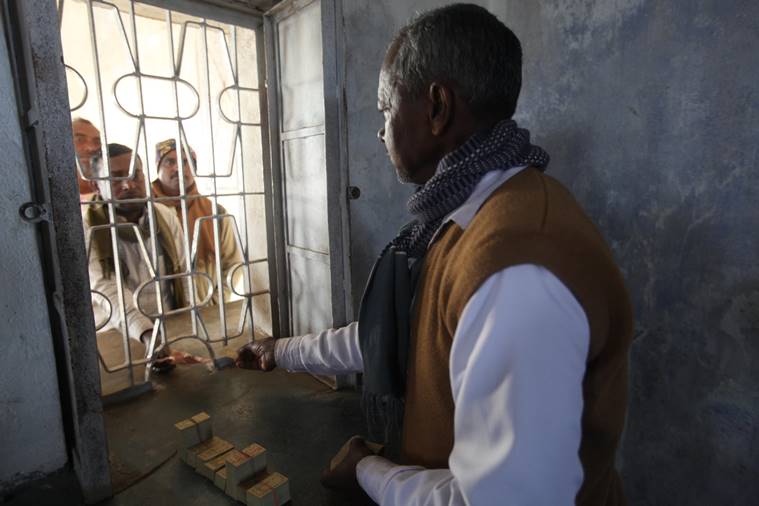 This counter, next to which Amulya sits, is already shut for the day. It opens at 4.30 am, and closes at sundown, around 5.30 pm. (Source: Express Photo)
This counter, next to which Amulya sits, is already shut for the day. It opens at 4.30 am, and closes at sundown, around 5.30 pm. (Source: Express Photo) 175-200 tickets are sold in a day. (Express Photo/Subham Dutta)
175-200 tickets are sold in a day. (Express Photo/Subham Dutta) Amulya and his brother make Rs 1.25 per ticket sold, with 175-200 tickets sold in a day. (Source: Express Photo)
Amulya and his brother make Rs 1.25 per ticket sold, with 175-200 tickets sold in a day. (Source: Express Photo) Recently, members of a prominent rationalist group, the West Bengal Vigyan Manch, spent a night at the station to counter the ghost theories. (Source: Express Photo)
Recently, members of a prominent rationalist group, the West Bengal Vigyan Manch, spent a night at the station to counter the ghost theories. (Source: Express Photo) Amulya runs the ticket counter with his brother. (Express Photo/Subham Dutta)
Amulya runs the ticket counter with his brother. (Express Photo/Subham Dutta) Located in the midst of a desolate patch of land, the station has no platform and is bare but for a single tubewell, a few signboards, and the 12 ft-by-10 ft ticket counter in a corner. (Source: Express Photo)
Located in the midst of a desolate patch of land, the station has no platform and is bare but for a single tubewell, a few signboards, and the 12 ft-by-10 ft ticket counter in a corner. (Source: Express Photo)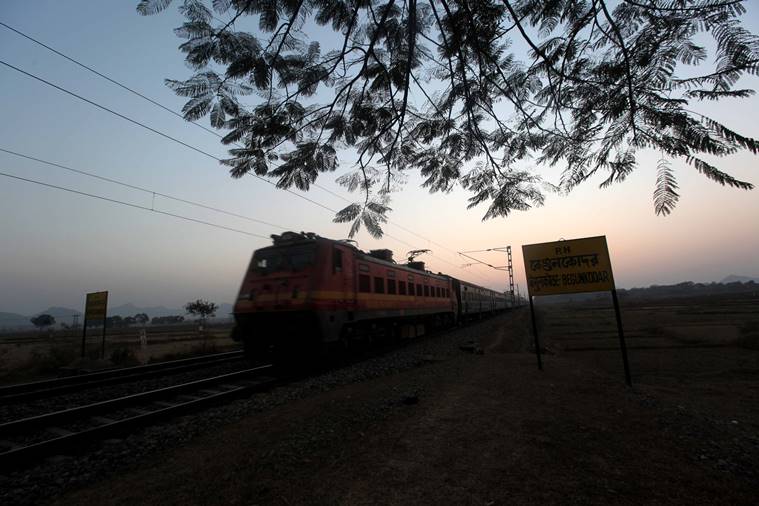 South Eastern Railways official Ghosh says, “If the villagers want upgradation, we will think about it. As far as ghost stories are concerned, there is no truth to them.” (Source: Express Photo)
South Eastern Railways official Ghosh says, “If the villagers want upgradation, we will think about it. As far as ghost stories are concerned, there is no truth to them.” (Source: Express Photo)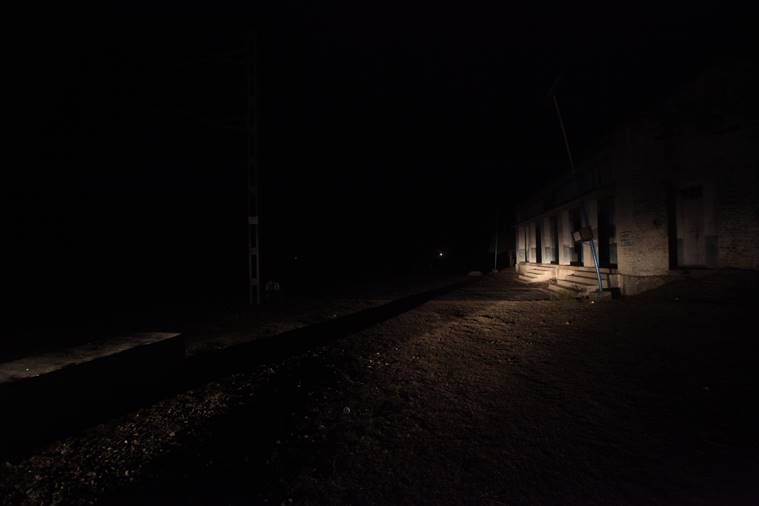 Still giving company to Amulya, Sripati, who, back in the ’70s, was the first teacher at the Government Primary School in nearby Bamnia, says he comes to the station every day. (Source: Express Photo)
Still giving company to Amulya, Sripati, who, back in the ’70s, was the first teacher at the Government Primary School in nearby Bamnia, says he comes to the station every day. (Source: Express Photo) Set up in 1960, the railway station shut down seven years later due to “ghost stories”. (Source: Express Photo)
Set up in 1960, the railway station shut down seven years later due to “ghost stories”. (Source: Express Photo)


